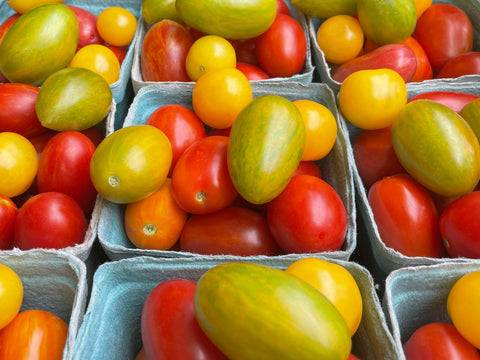To Transplant or Not to Transplant?
Deciding whether to transplant or directly sow can be a conundrum! Some crops prefer to be moved, while others like to stay put. We've crafted a helpful chart for you, focusing on USDA Zones 5&6.
| Crop | Can be sown indoors and then transplanted | Can be direct sown |
| Amaranth | ✔ | |
| Arugula | ✔ | |
| Basil | ✔ | ✔ |
|
Beans |
✔ | |
| Beet | ✔ | ✔ |
| Broccoli | ✔ | ✔ |
| Cabbage | ✔ | ✔ |
| Carrot | ✔ | |
| Chard, Swiss | ✔ | ✔ |
| Chicory | ✔ | ✔ |
| Cilantro | not recommended | ✔ |
| Collards | ✔ | ✔ |
| Corn | ✔ | |
| Cucumber | ✔ | ✔ |
| Edamame | ✔ | |
| Eggplant | ✔ | |
| Garlic Chives, Chives | ✔ | ✔ |
| Good King Henry | ✔ | ✔ |
| Hairy Vetch | ✔ | |
| Kale (large plants) | ✔ | ✔ |
| Kale (baby leaf) | ✔ | |
| Leeks | ✔ | ✔ |
| Lettuce | ✔ | ✔ |
| Melon* | ✔ | ✔ |
| Mustard Greens | ✔ | |
| Onions (bulb onions) | ✔ | |
| Peas | ✔ | ✔ |
| Peppers | ✔ | |
| Radish (spring types) | ✔ | |
| Spinach | ✔ | |
| Squash* | ✔ | ✔ |
| Tomato | ✔ | not recommended |
| Watermelon | ✔ | ✔ |
Note: Seeds like Melon and Squash must be started in biodegradable pots and planted into the ground pot-and-all.
🌱 Vegetable Planting Date Guide (USDA Zones 5&6) Looking for a comprehensive resource on when to direct sow or start indoors? Our guide also provides fall sowing dates!

Pictured: Super Snacks Tomato Mix (click for seeds)
General Transplanting Tips 🌿
-
Harden Off Your Plants: This process takes at least a week. It prepares your indoor seedlings for outdoor conditions like wind, sunlight, and temperature changes.
- Method 1: Begin with 2 hours in a sunny outdoor spot, then return them indoors. Increase the outdoor time by 1.5 hours daily until they stay outside day and night.
- Method 2: Start them outdoors in a protected spot with just 2 hours of morning sun. Gradually expose them to more sunlight and wind over 7 days.
-
Planting Conditions: Opt for beds rich in compost or with organic fertilizer. Plant when the temperature is cooler and the wind is calmer. Ensure the forecasted temperature for the next couple of days isn't above 85°F.
-
Post-Planting Care: Water your transplants immediately. If it's above 80°F, water them daily.
-
Fertilizing: Avoid it before or after transplanting unless you're using liquid seaweed. Avoid high-nitrogen fertilizers like fish emulsion.
Crop-Specific Guidelines for Transplanting
1. Cucurbits (Squash, Melons, & Cucumbers)
- Use biodegradable pots; cucurbits hate root disturbances.
- Plant the entire pot in the ground.
- Refer to our Vegetable Seed Planting Guide for spacing guidelines.
- Use row cover fabric post-planting to deter pests.
2. Peppers & Tomatoes
- Prevent peppers from becoming pot-bound to avoid growth hindrance.
- Bury tomato and pepper starts deep in the soil, with only a bit of stem and leaf exposed.
There you go! We hope this layout makes your decision-making smoother and your crops happier. Happy planting! 🌱🌻
